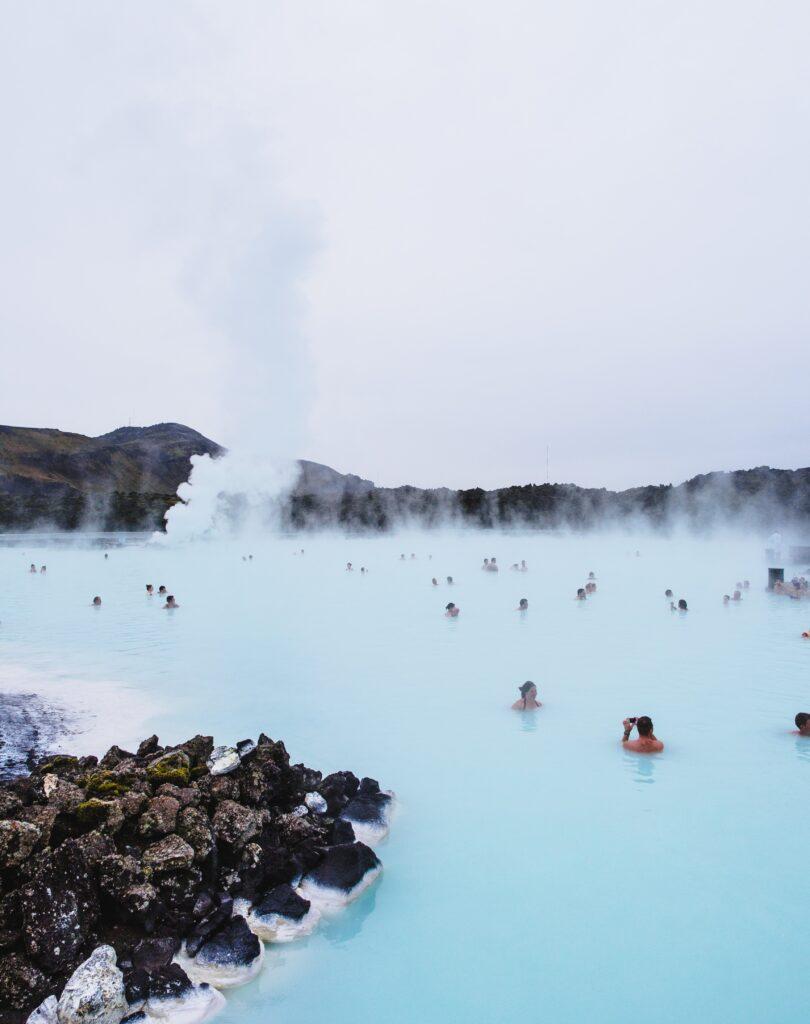Thermal baths and hot springs have been a source of healing and relaxation for centuries. Rich in minerals and often located in scenic landscapes, these natural wonders offer a unique wellness experience. This guide explores the therapeutic benefits of thermal baths and hot springs in Japan, Iceland, and Hungary, providing essential visa information, hotel recommendations, and tour suggestions.
Japan: Onsen Culture and Tradition
Water Composition and Benefits
Japanese Onsen waters vary in mineral content, including sulfur, iron, and sodium chloride. These minerals are believed to alleviate ailments like rheumatism, skin conditions, and fatigue.
Hakone
- Hakone Yumoto Onsen: Rich in sulfur, it’s known for improving blood circulation and skin health.
- Owakudani Valley: Famous for its acidic waters, which are believed to relieve muscle pain.
Beppu
- Beppu Hatto (Eight Hells): A collection of unique hot springs, each with distinct minerals and therapeutic properties, such as mud baths for skin rejuvenation.
Traditional Bathing Rituals
Japanese Onsen often involves a pre-bath cleansing ritual, emphasizing purification. Outdoor baths (rotenburo) provide a connection with nature, enhancing mental well-being.
Iceland: Geothermal Wonders
Water Composition and Benefits
Iceland’s hot springs are rich in minerals like silica and sulfur. The geothermal waters are known for their skin-healing properties, particularly for conditions like psoriasis.
Blue Lagoon
- Blue Lagoon: The milky-blue waters contain silica mud, which exfoliates and nourishes the skin. The high temperature also aids in relaxation and stress relief.
Secret Lagoon
- Secret Lagoon: One of the oldest natural hot springs, with mineral-rich waters that soothe aching muscles and joints.
Geothermal Energy and Sustainability
Iceland’s geothermal activity is not only a source of wellness but also sustainable energy. Many hot springs are part of a broader commitment to renewable energy and environmental conservation.
Hungary: Historic Thermal Baths
Water Composition and Benefits
Hungary’s thermal baths are rich in minerals like calcium, magnesium, and hydrogen carbonate. These waters are known for treating joint pain, arthritis, and respiratory issues.
Széchenyi Baths
- Széchenyi Baths: Europe’s largest medicinal bath, with 18 pools. The waters contain fluoride, which is beneficial for joint pains and inflammations.
Gellért Baths
- Gellért Baths: Known for its stunning Art Nouveau architecture, the waters are rich in calcium and magnesium, aiding in relaxation and muscle recovery.
Historical and Cultural Significance
Hungary’s thermal baths are often housed in historic buildings, reflecting various architectural styles. These baths are not only places of healing but also social hubs, where locals gather to chat and play chess.
Conclusion
Thermal baths and hot springs are more than just warm waters; they are a blend of unique minerals, cultural traditions, and natural landscapes. From the sulfur-rich Onsen of Japan to the silica-laden Blue Lagoon of Iceland and the historic medicinal baths of Hungary, each destination offers a distinctive wellness experience.
These healing waters have been cherished for centuries, providing physical and mental rejuvenation. Whether seeking relief from specific ailments or simply a tranquil escape, thermal baths and hot springs remain a timeless connection between nature, culture, and well-being.




